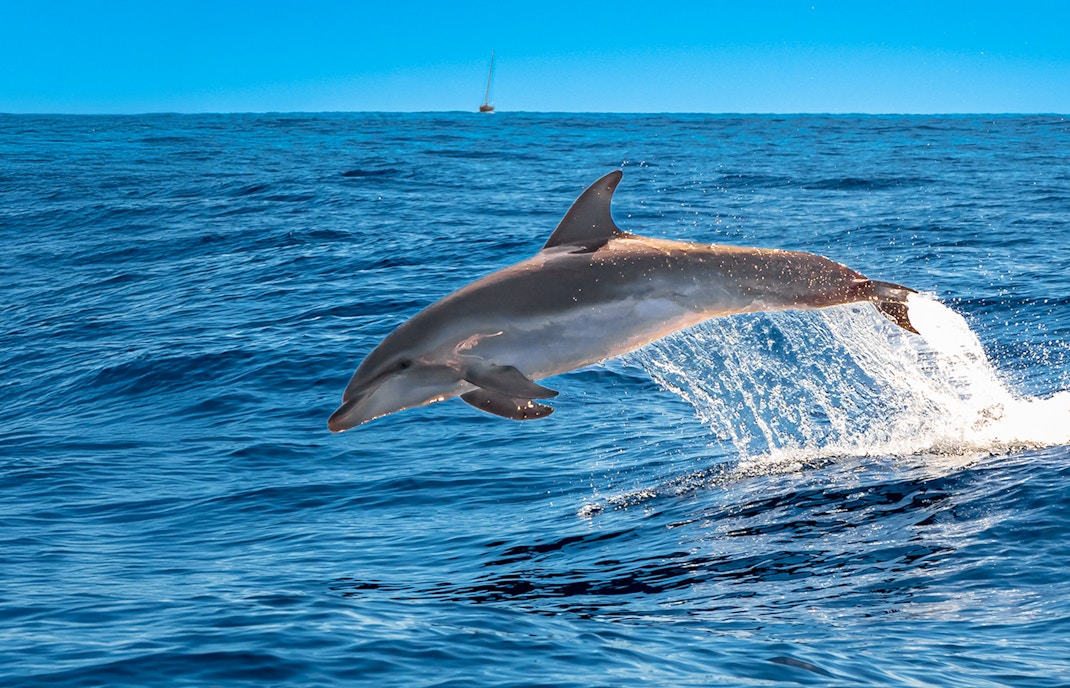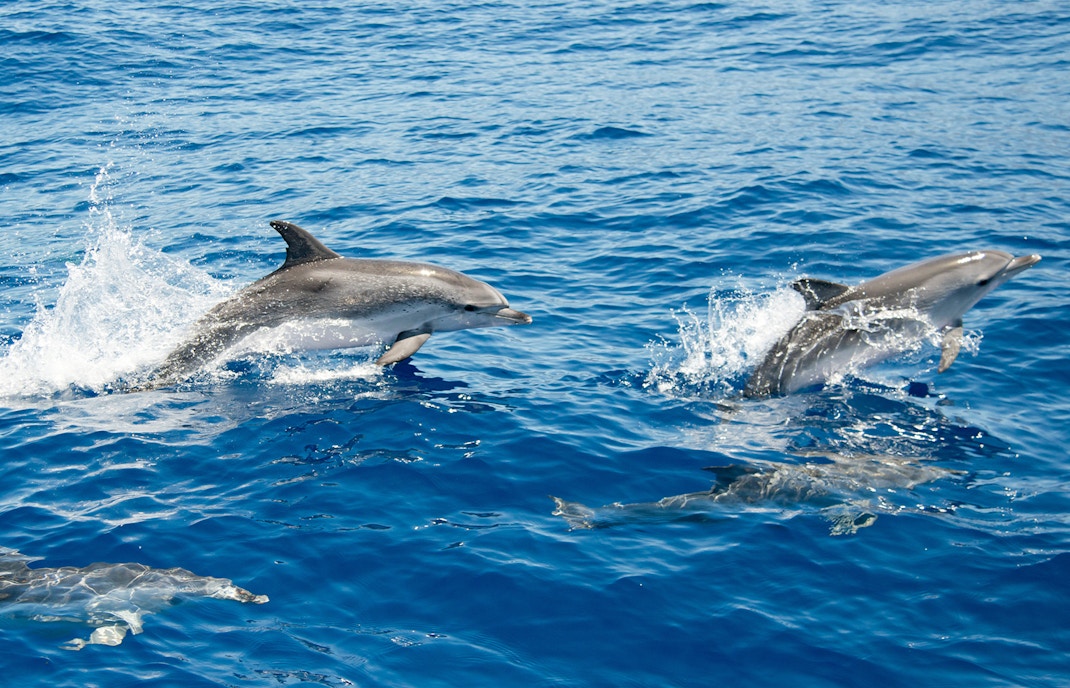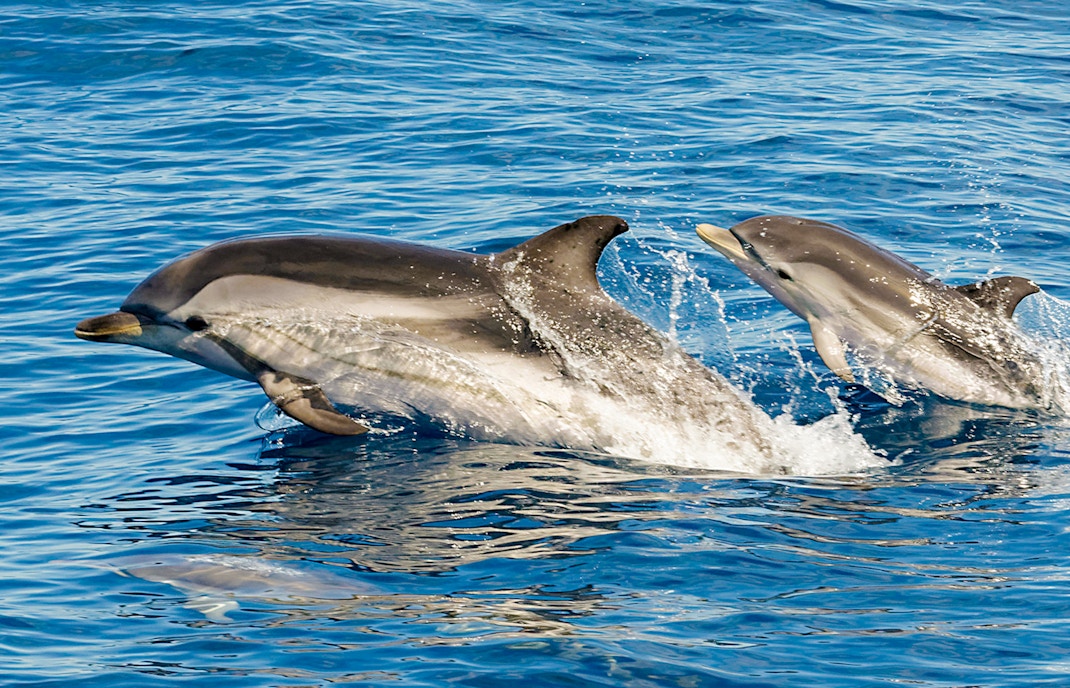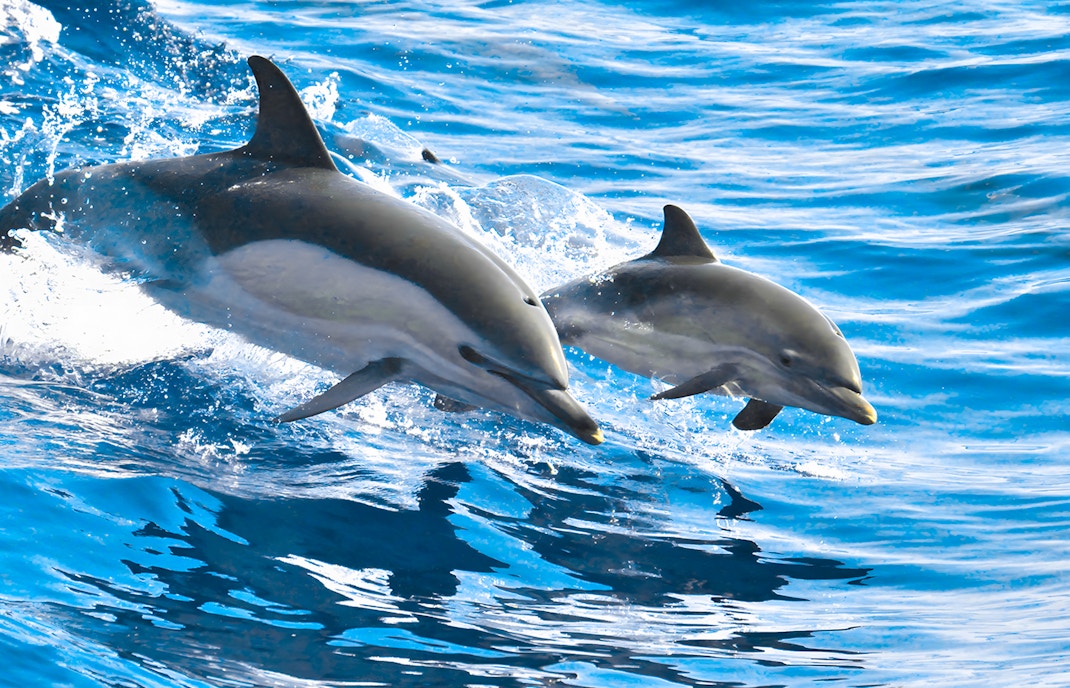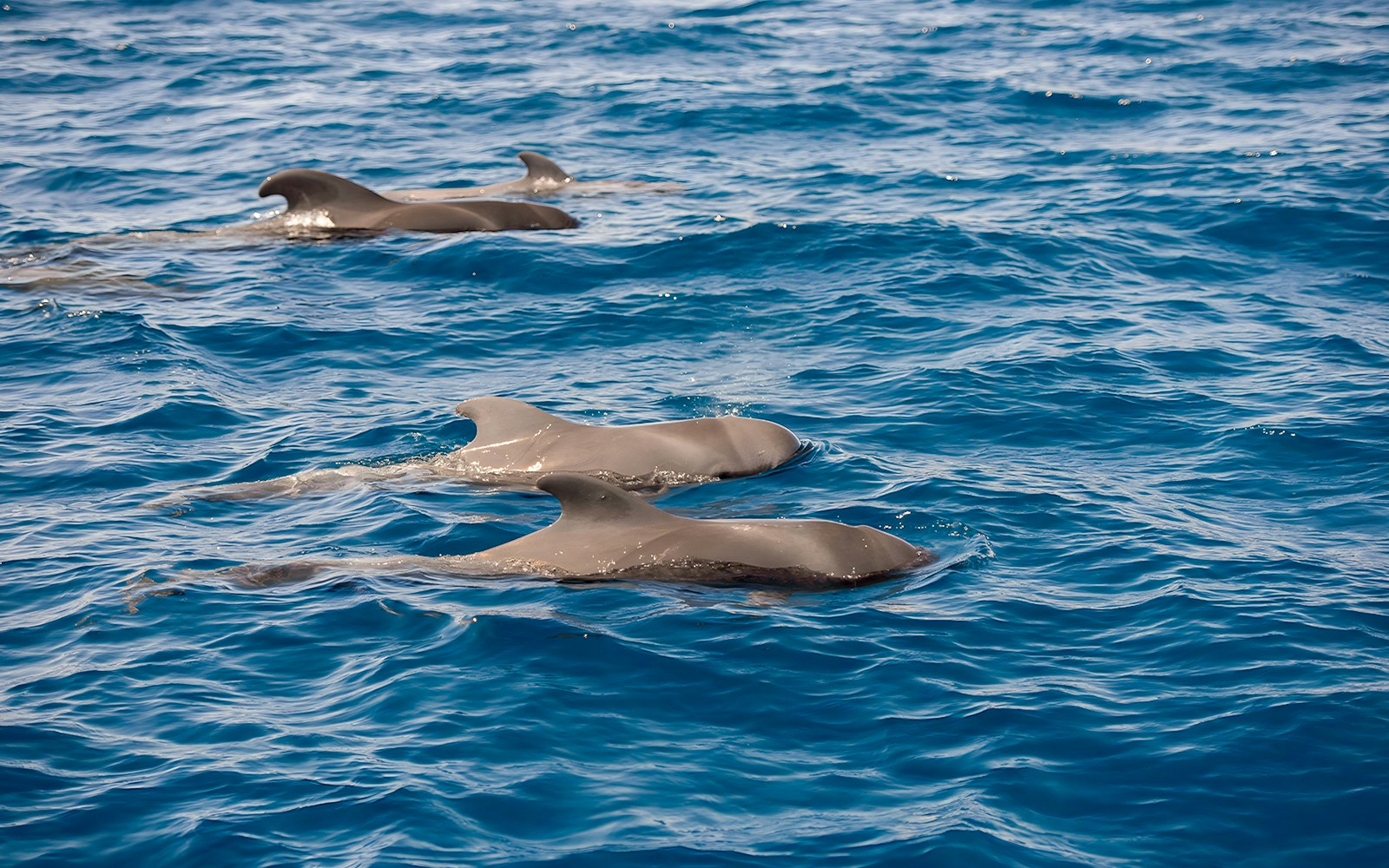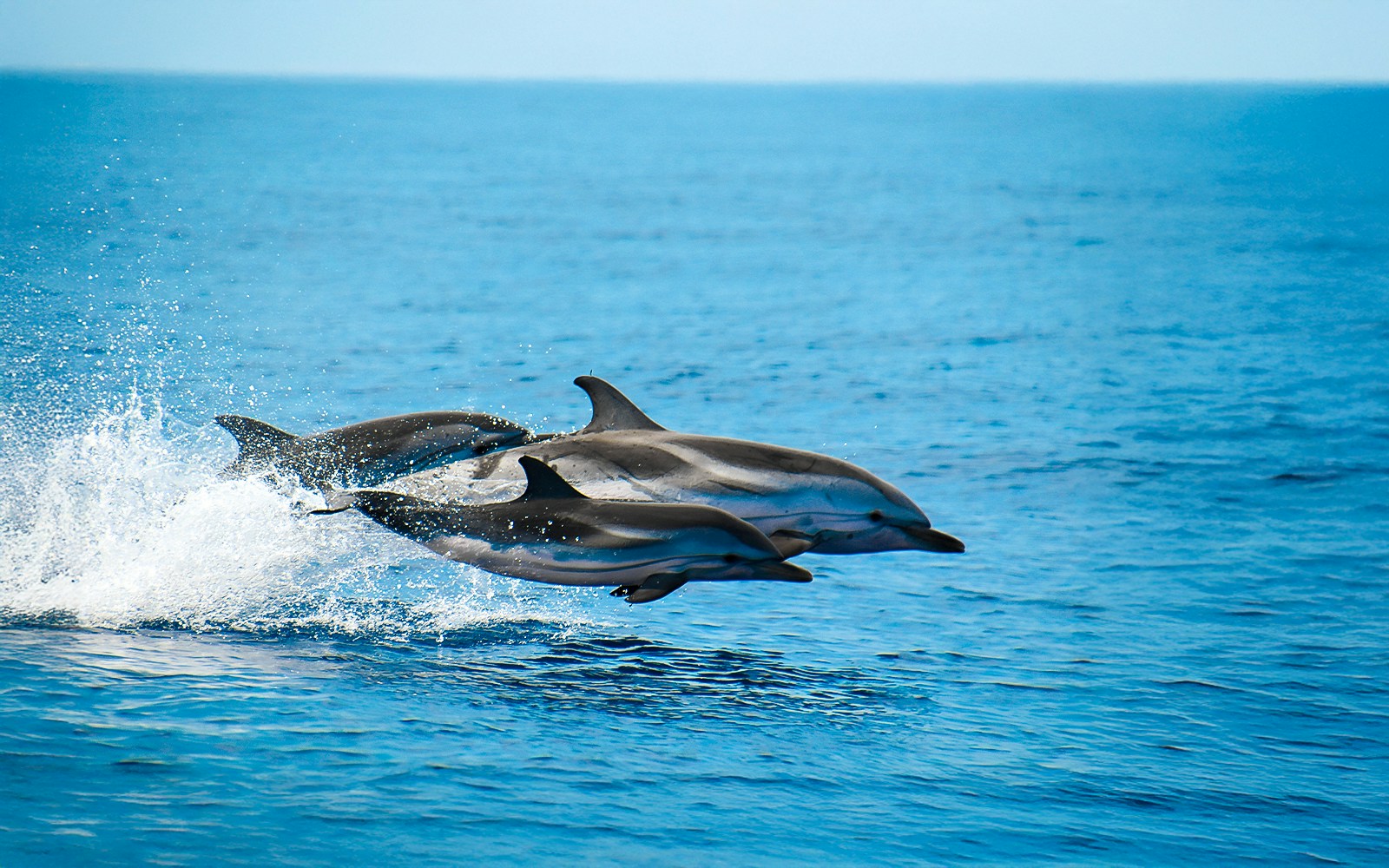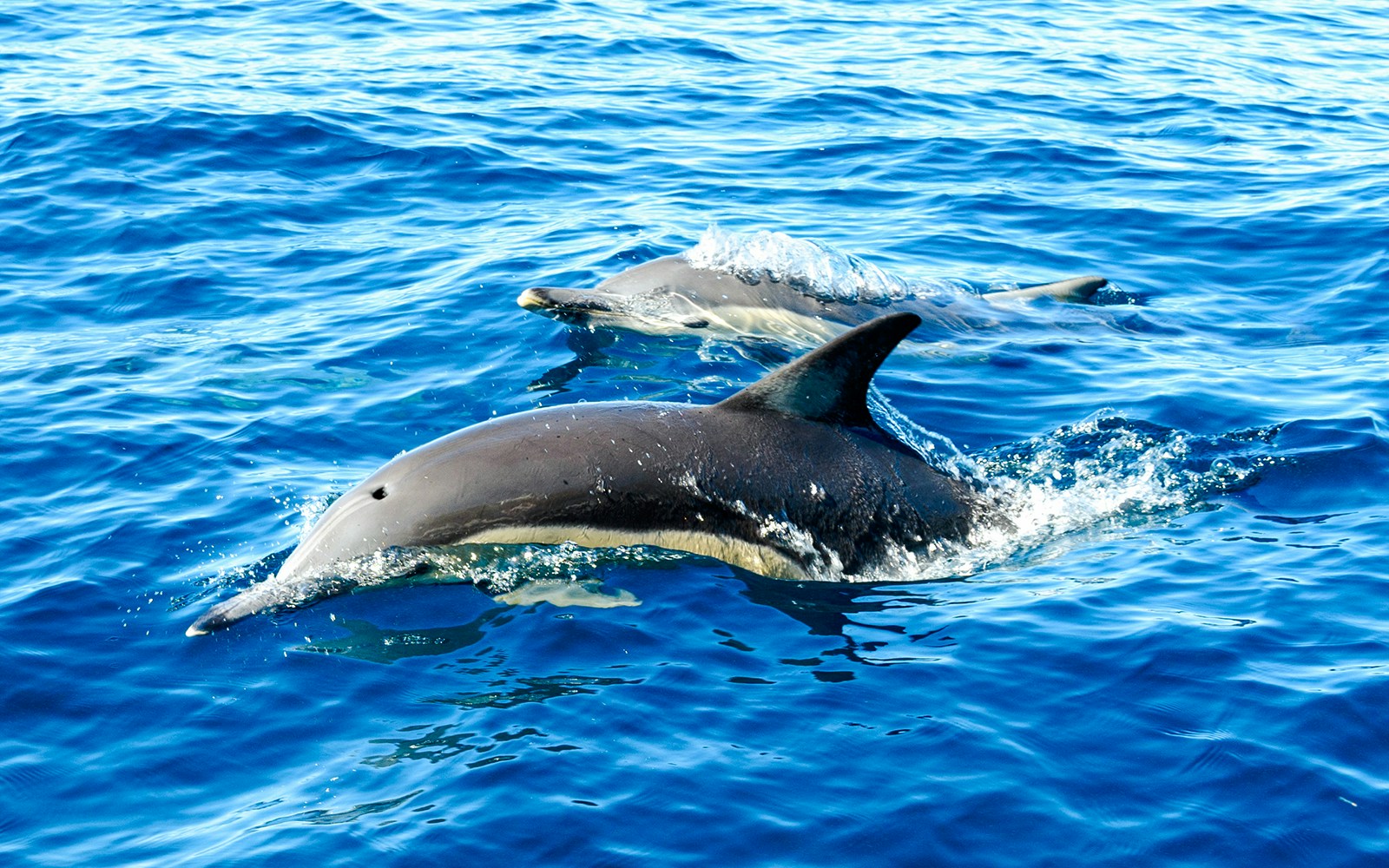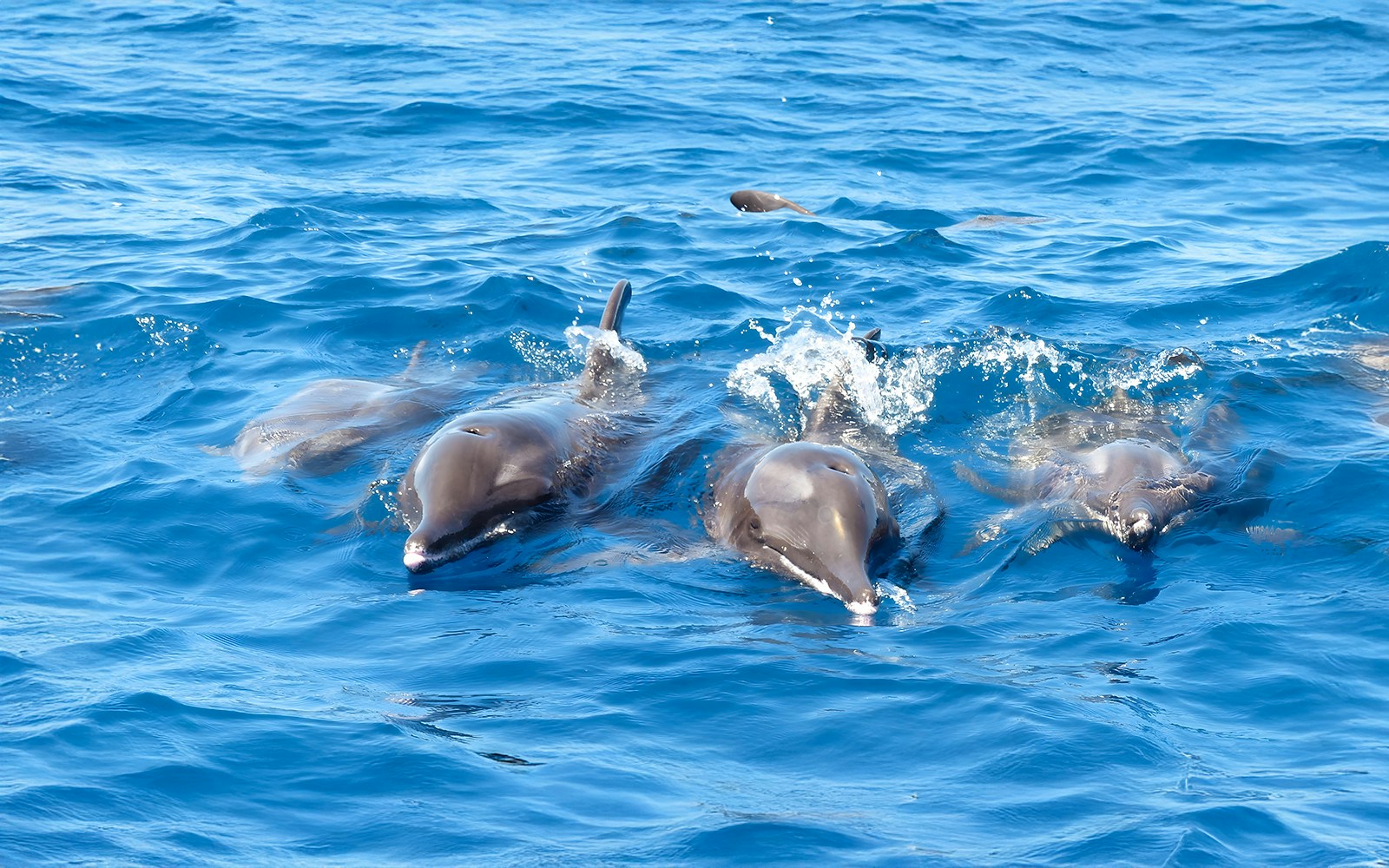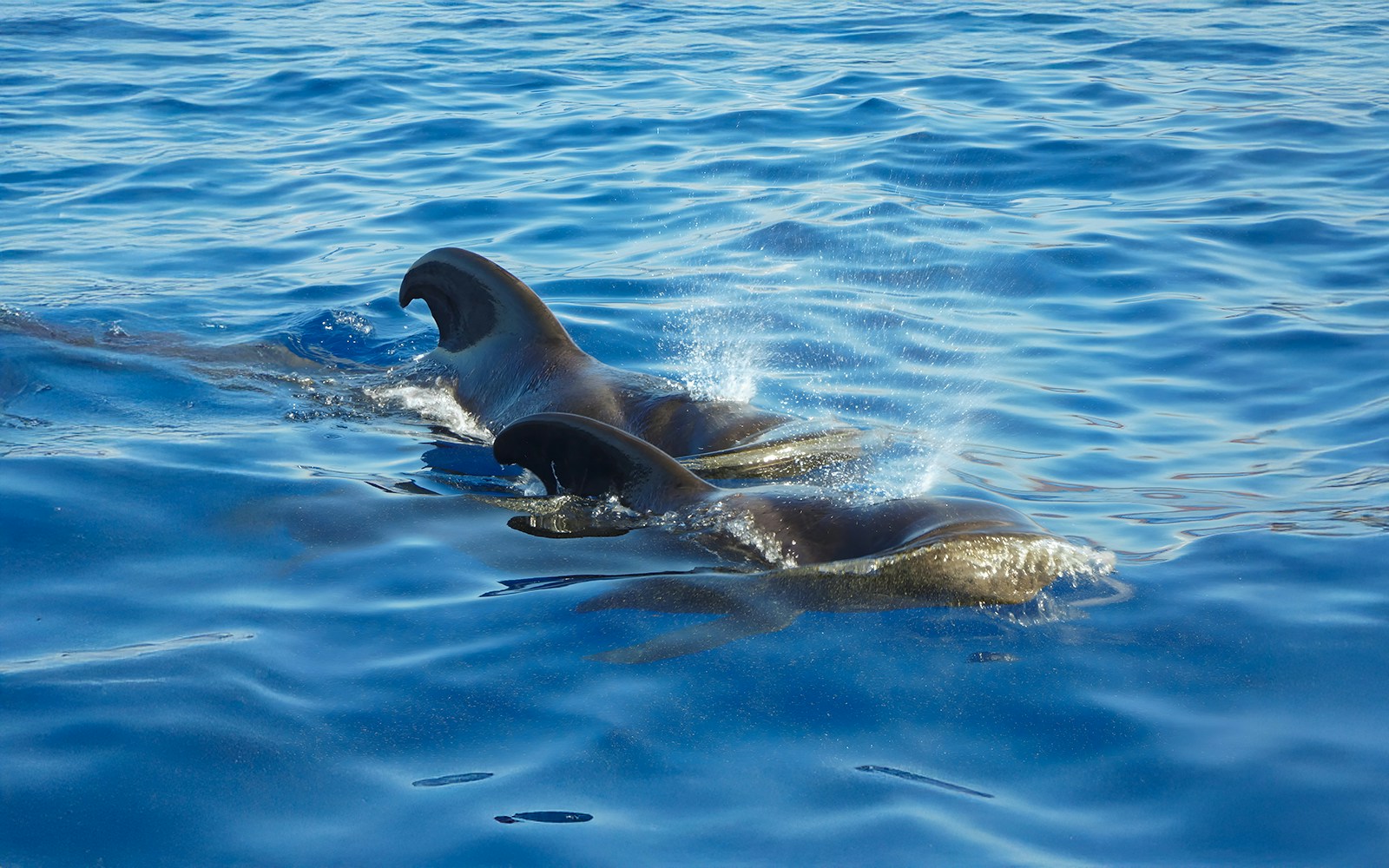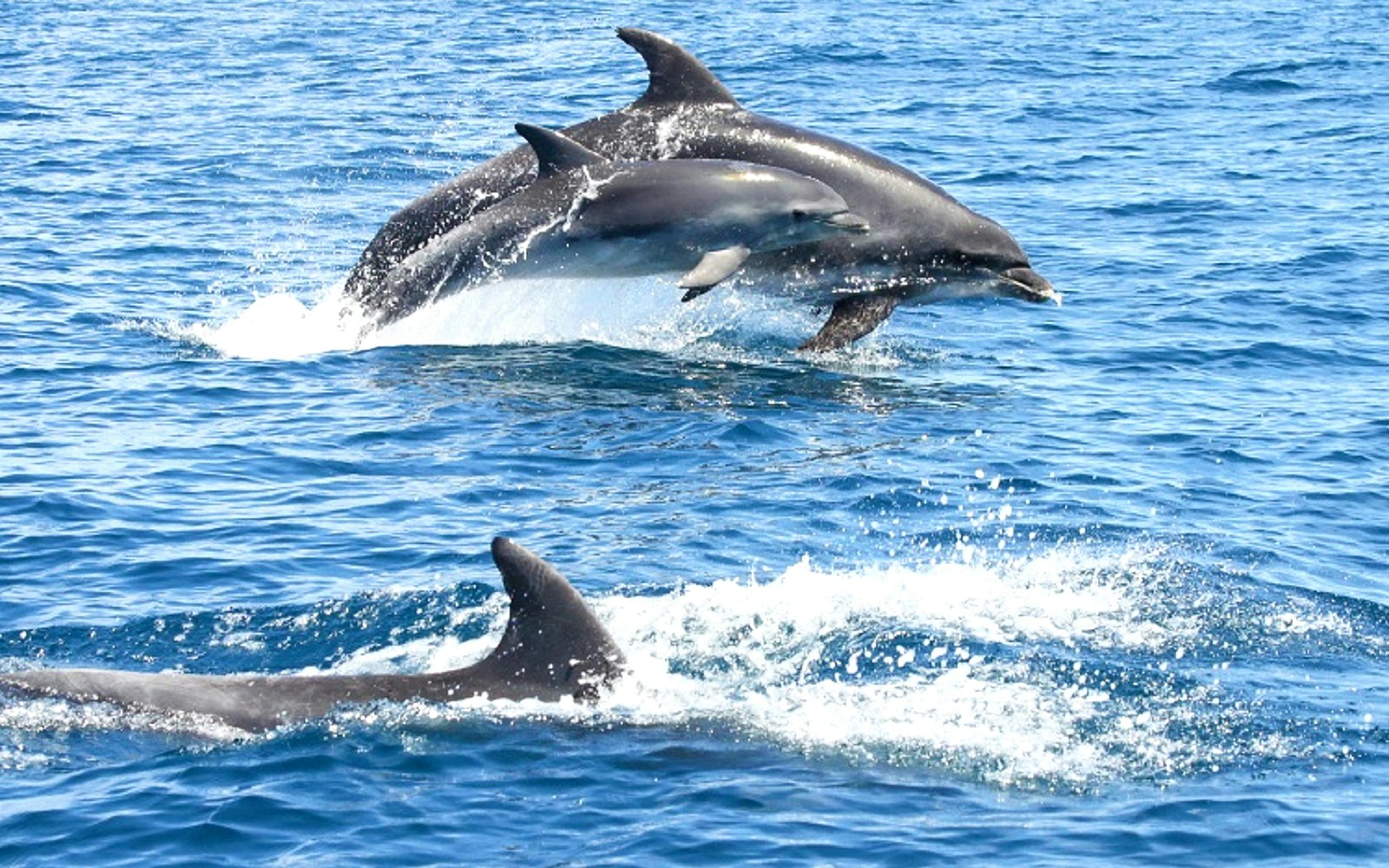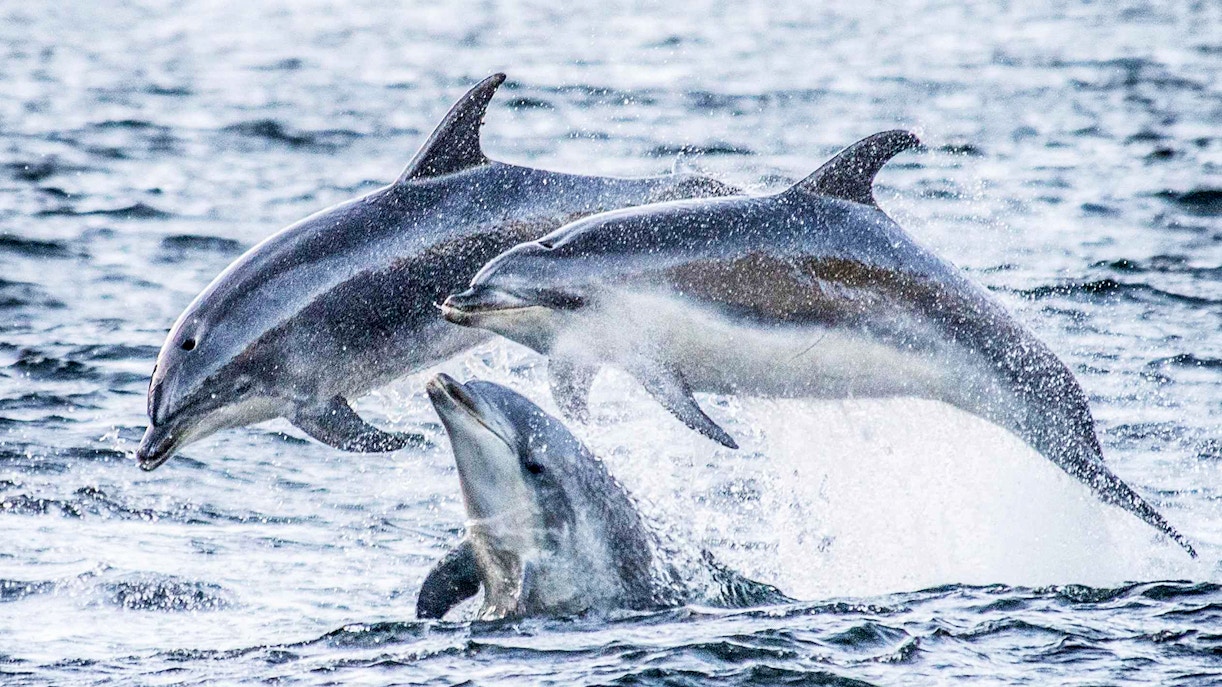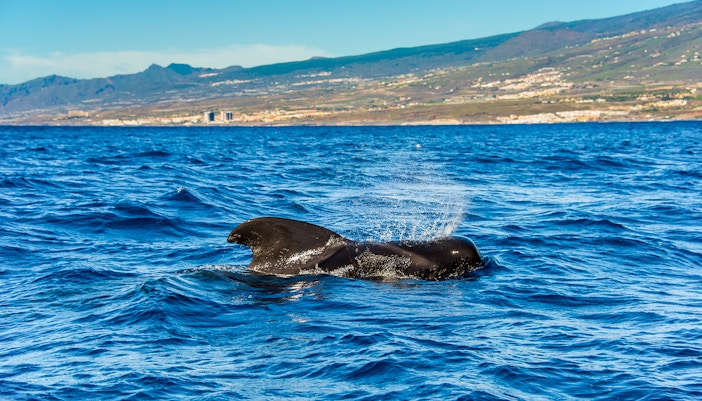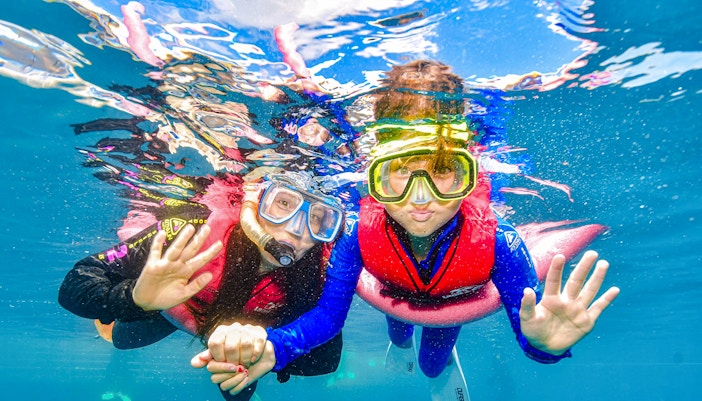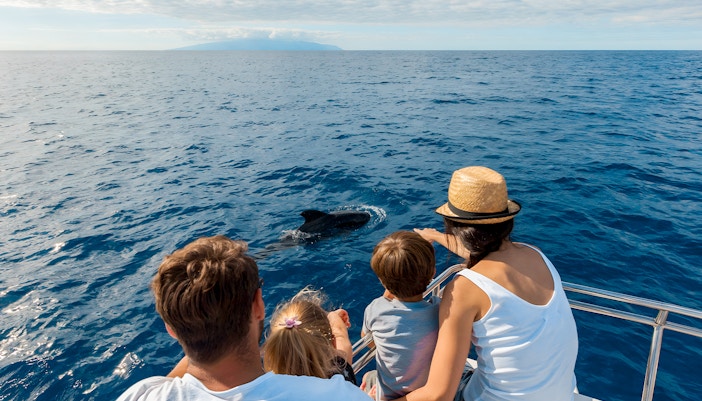Meet the VIPs of Tenerife! These amazing creatures can grow up to 4 meters long, are strong, and have a curious nature that makes them super interested in boats. These dolphins are residents, so you’ve got a strong chance of seeing them year-round.
- Spotting tip: Look for them surfing alongside catamarans or popping up in small groups near the coast. They love bow-riding, so if your captain slows down at just the right moment, don’t be surprised if they swim right under your nose

